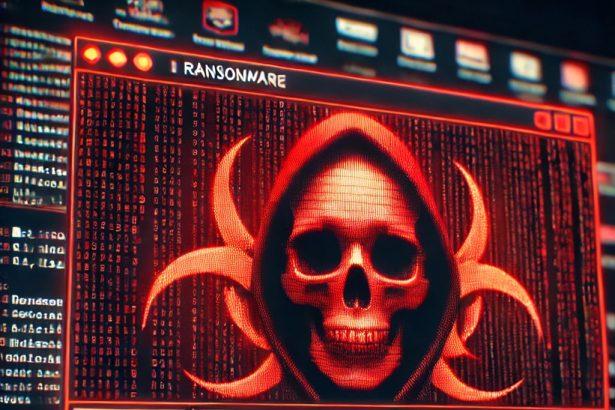Maximsru ransomware is a dangerous form of malicious software that locks files and demands a ransom for their decryption. The ransomware is typically distributed through phishing emails, malicious attachments, and infected websites. Once executed, it encrypts the victim’s files, rendering them inaccessible without paying the criminals. Below, we’ll dive deeper into the specifics of Maximsru ransomware, the symptoms of infection, the damage it causes, and how it operates.
Maximsru Ransomware Overview
Maximsru ransomware primarily targets files on the victim’s system, encrypting them and appending a random extension to the filenames. For example, a file named “1.jpg” might become “1.jpg.T6dpY.” The ransomware also changes the desktop wallpaper to display a message demanding ransom payment, and it creates a ransom note titled MAXIMSRU.txt, which provides instructions on how to pay for decryption.
This type of ransomware is known for using various encryption methods, making decryption nearly impossible without the criminal’s intervention. The cybercriminals behind Maximsru typically demand payments in cryptocurrency, like Bitcoin, in exchange for decryption tools that often never materialize.
Ransomware Messages
Upon infection, Maximsru displays two main messages:
- Desktop Wallpaper – The ransomware changes the victim’s desktop wallpaper to include the following message:nginxCopy
Contact Maximsru@tutamail.com - Ransom Note – The ransomware creates a file called MAXIMSRU.txt which contains the following ransom message:pgsqlCopy
All your files have been encrypted Contact to decrypt --> Maximsru@tutamail.com
Maximsru Ransomware Threat Summary
| Attribute | Details |
|---|---|
| Threat Name | Maximsru Ransomware |
| Threat Type | Ransomware, Crypto Virus, File Locker |
| Encrypted File Extension | .[five random characters] (e.g., .T6dpY) |
| Ransom Note File Name | MAXIMSRU.txt |
| Cyber Criminal Contact | Maximsru@tutamail.com |
| Detection Names | Avast (Win32:RansomX-gen), Combo Cleaner (Generic.Ransom.Small.B5ACB59F), ESET-NOD32 (MSIL/Filecoder.Chaos.B), Kaspersky (HEUR:Trojan-Ransom.Win32.Generic), Microsoft (Ransom:MSIL/Filecoder.SWA!MTB) |
| Symptoms | Files are inaccessible, filenames altered, ransom demand displayed on desktop |
| Damage | Files are encrypted and inaccessible, possible additional malware infections |
| Distribution Methods | Phishing emails, malicious attachments, torrent sites, malicious ads |
| Danger Level | High – All files are encrypted, and additional threats may be installed |
Maximsru Ransomware: How It Spreads and What It Does
Maximsru ransomware typically spreads through phishing schemes or malicious attachments in emails, which can disguise the ransomware as an innocuous file. Once executed, the ransomware encrypts files on the infected system and appends a random string of characters to each file’s extension. This encryption makes the files unreadable without the decryption key, which is held by the attackers.
In addition to encrypting files, the ransomware changes the victim’s desktop wallpaper to alert them about the infection and directs them to contact the attackers for decryption. The MAXIMSRU.txt file contains further instructions on how to get in touch with the criminals for decryption, typically requiring the victim to pay a ransom in cryptocurrency.
The Dangers of Paying Ransom
While the ransom note promises that paying will result in receiving a decryption key, many victims report that the attackers fail to provide the necessary tools to unlock their files. In some cases, victims may pay the ransom only to be further extorted or infected with additional malware. Security experts advise against paying the ransom and recommend focusing on removing the ransomware from the system and restoring files from a secure backup if available.
Maximsru Ransomware: Detection and Response
Maximsru is detected by various antivirus programs under different names, such as Win32:RansomX-gen (Avast) or MSIL/Filecoder.Chaos.B (ESET-NOD32). If infected, it is crucial to remove the ransomware from your system to prevent further encryption of files, although this will not recover any files already encrypted. Victims without a backup are advised to consult cybersecurity experts for potential decryption options, though these are often limited.
Manual Ransomware Removal Guide
Warning: Manual removal is complex and risky. If not done correctly, it can lead to data loss or incomplete removal of ransomware. Only follow this method if you are an advanced user. If unsure, proceed with Method 2 (SpyHunter Removal Guide).
Step 1: Disconnect from the Internet
- Unplug your Ethernet cable or disconnect Wi-Fi immediately to prevent further communication with the ransomware’s command and control (C2) servers.
Step 2: Boot into Safe Mode
For Windows Users:
- For Windows 10, 11:
- Press Windows + R, type
msconfig, and hit Enter. - Go to the Boot tab.
- Check Safe boot and select Network.
- Click Apply and OK, then restart your PC.
- Press Windows + R, type
- For Windows 7, 8:
- Restart your PC and press F8 repeatedly before Windows loads.
- Select Safe Mode with Networking and press Enter.
For Mac Users:
- Restart your Mac and immediately press and hold the Shift key.
- Release the key once you see the Apple logo.
- Your Mac will start in Safe Mode.
Step 3: Locate and Terminate Malicious Processes
For Windows Users:
- Press Ctrl + Shift + Esc to open Task Manager.
- Look for suspicious processes (e.g., unknown names, high CPU usage, or random letters).
- Right-click on the process and select End Task.
For Mac Users:
- Open Activity Monitor (Finder > Applications > Utilities > Activity Monitor).
- Look for unusual processes.
- Select the process and click Force Quit.
Step 4: Delete Malicious Files
For Windows Users:
- Press Windows + R, type
%temp%, and hit Enter. - Delete all files in the Temp folder.
- Navigate to:
C:\Users\[Your Username]\AppData\RoamingC:\Users\[Your Username]\AppData\LocalC:\Windows\System32
- Look for suspicious files related to the ransomware (random file names, recently modified) and delete them.
For Mac Users:
- Open Finder and go to Go > Go to Folder.
- Type
~/Library/Application Supportand delete suspicious folders. - Navigate to
~/Library/LaunchAgentsand remove unknown.plistfiles.
Step 5: Remove Ransomware from Registry or System Settings
For Windows Users:
Warning: Incorrect changes in the Registry Editor can damage your system. Proceed with caution.
- Press Windows + R, type
regedit, and hit Enter. - Navigate to:
HKEY_CURRENT_USER\SoftwareHKEY_LOCAL_MACHINE\Software
- Look for unfamiliar folders with random characters or ransomware-related names.
- Right-click and select Delete.
For Mac Users:
- Go to System Preferences > Users & Groups.
- Click on Login Items and remove any suspicious startup items.
- Navigate to
~/Library/Preferencesand remove malicious.plistfiles.
Step 6: Restore System Using System Restore (Windows) or Time Machine (Mac)
For Windows Users:
- Press Windows + R, type
rstrui, and hit Enter. - Click Next, choose a restore point before the infection, and follow the prompts to restore your system.
For Mac Users:
- Restart your Mac and hold Command + R to enter macOS Utilities.
- Select Restore from Time Machine Backup.
- Choose a backup prior to the ransomware infection and restore your system.
Step 7: Use a Decryption Tool (If Available)
- Visit No More Ransom (www.nomoreransom.org) and check if a decryption tool is available for your ransomware variant.
Step 8: Recover Files Using Backup
- If you have backups on an external drive or cloud storage, restore your files.
Automatic Ransomware Removal Using SpyHunter
If manual removal seems too risky or complicated, using a reliable anti-malware tool like SpyHunter is the best alternative.
Step 1: Download SpyHunter
Download SpyHunter from the official link: Download SpyHunter
Or follow the official installation instructions here:
SpyHunter Download Instructions
Step 2: Install SpyHunter
- Open the downloaded file (
SpyHunter-Installer.exe). - Follow the on-screen prompts to install the program.
- Once installed, launch SpyHunter.
Step 3: Perform a Full System Scan
- Click on Start Scan Now.
- SpyHunter will scan for ransomware and other malware.
- Wait for the scan to complete.
Step 4: Remove Detected Threats
- After the scan, SpyHunter will list all detected threats.
- Click Fix Threats to remove the ransomware.
Step 5: Use SpyHunter’s Malware HelpDesk (If Needed)
If you are dealing with a stubborn ransomware variant, SpyHunter’s Malware HelpDesk provides custom fixes to remove advanced threats.
Step 6: Restore Your Files
If your files are encrypted:
- Try No More Ransom (www.nomoreransom.org) for decryption tools.
- Restore from cloud storage or external backups.
Preventing Future Ransomware Attacks
- Keep backups on an external hard drive or cloud storage.
- Use SpyHunter to detect threats before they infect your system.
- Enable Windows Defender or a trusted antivirus program.
- Avoid suspicious emails, attachments, and links.
- Update Windows, macOS & software regularly.




